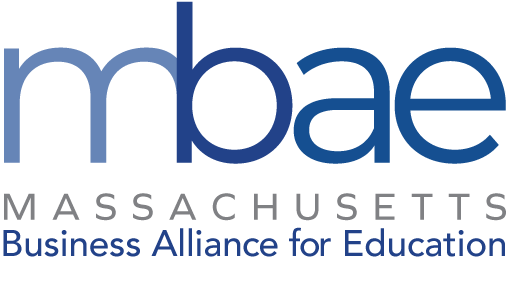It’s computer science education week across the nation and the globe – an annual effort to raise awareness about the need to ensure all students have access to computer science instruction and to inspire students to take it. Yet, a new state-by-state analysis from code.org of high school student access to, and participation in, computer science courses shows only 5.9% of Massachusetts high school students are enrolled in a foundational computer science course and, just as troubling, more than one in four urban high schools don’t even offer one.
The Massachusetts Business Alliance for Education (MBAE) finds these numbers deeply concerning given the unmet and growing demand for a highly qualified workforce to fill positions that require these skills. Data show Massachusetts has averaged 19,382 open computing jobs each month that have an average salary of $105,459, yet there were only 2,908 graduates in computer science in 2018.
“Improving diversity in tech careers is an urgent priority for employers, yet Black, Hispanic/Latino and female students are underrepresented in computer science classes. That’s got to change,” said Ed Lambert, Executive Director of MBAE. Code.org data show that Black students make up 11% of the high school student population in Massachusetts, but just 8% of those students are in a foundational computer science course. Hispanic/Latino students are 1.8 times less likely than their white and Asian peers to enroll in computer science. Just 25% of students enrolled in computer science in Massachusetts are female.
Massachusetts has made great progress in improving access to computer science instruction. In 2016-2017, just 58% of high schools offered a foundational computer science course. That number rose to 82% in 2019-2020. Today, 90% of high school students attend a school that offers computer science, yet overall participation rates and disparities in enrollment for subgroups remains an urgent challenge and access remains more limited in urban high schools where there are higher concentrations of students of color and those from economically disadvantaged backgrounds.
These findings come at a moment in time where we have the capacity to scale up computer science instruction in our classrooms. Increased state and federal relief funding allow investments in teacher training, curriculum development and classroom technology.
“Building a pipeline for STEM careers is critical to the continued growth of the Massachusetts economy,” said Sara Fraim, Vice President of Massachusetts Technology Leadership Council (MassTLC) and the Executive Director of the MassTLC Education Foundation. “Moreover, tech jobs pay roughly twice the state average. Providing access to CS and STEM education across the entire state will not only create the talent needed to fill roles, it will enable us to close an ever-growing equity gap disproportionately impacting the Black and Latinx population.”
According to code.org, 67% of all new STEM jobs nationally are in computing. Adjusted for population, Massachusetts has more demand for STEM jobs than almost every other state. Between 2018 and 2028, one of out of every three jobs created in the Commonwealth will be in STEM fields according to state estimates using Bureau of Labor Statistics.
The pandemic may accelerate this trend with a surge in digital or digital enabled products that could lead to increased demand for tech talent.
“CSforMA, Inc. shares MBAE’s concern about the level of participation of MA students in Computer Science coursework. While we are making strides, including by providing professional development to teachers over the last year, we need to continue that work and the funding that supports it so that we can ensure that all students are offered, are able to take, and be successful in computer science education,” said Deborah Boisvert, Executive Director of CSforMA. “We have a long way to go, but MA can and will succeed if we all work together toward that vision.”
According to the MassTLC demand for graduates in computing and mathematical occupations far outstrips supply with 26 job openings per bachelor level graduate, seven job openings per associate degree graduate, and three per master’s level graduate. Adding to the pressure to grow the tech workforce are retirements in the sector. MassTLC projected in 2019 that 143,000 Massachusetts tech workers are expected to retire over the next eight years. Meeting workforce demand will require both growing and diversifying the tech workforce. Data from 2020 show that only 5 percent of Massachusetts’ tech workers are Black or African American, and around 7 percent are Hispanic or Latino.
STEM jobs are not just in the life sciences and IT. They are in manufacturing, postsecondary teaching, retail, finance, and business.



